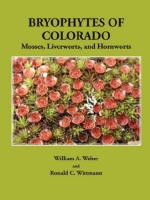|
This section contains 1,984 words (approx. 7 pages at 300 words per page) |

|
Plant scientists recognize two kinds of land plants: bryophytes (nonvascular land plants) and tracheophytes (vascular land plants). Bryophytes are small, herbaceous plants that grow closely packed together in mats or cushions on rocks or soil or as epiphytes on the trunks and leaves of forest trees. Bryophytes are distinguished from tracheophytes by two important characteristics. First, in all bryophytes the ecologically persistent, photosynthetic phase of the life cycle is the haploid, gametophyte generation rather than the diploid sporophyte; bryophyte sporophytes are very short-lived, are attached to and nutritionally dependent on their gametophytes, and consist of only an unbranched stalk, or seta, and a single, terminal sporangium. Second, bryophytes never form xylem tissue, the special lignin-containing, water-conducting tissue that is found in the sporophytes of all vascular plants. At one time, all bryophytes were placed in a single phylum, intermediate in position between algae and vascular plants. Modern studies...
|
This section contains 1,984 words (approx. 7 pages at 300 words per page) |

|


